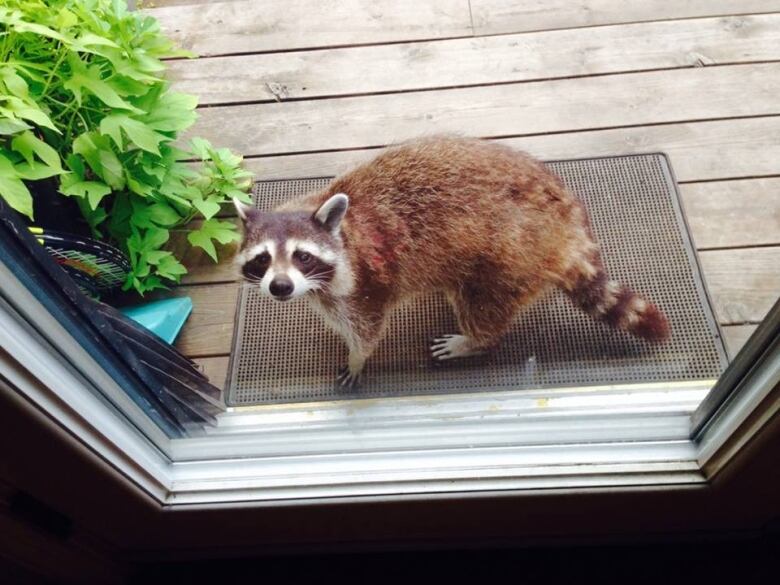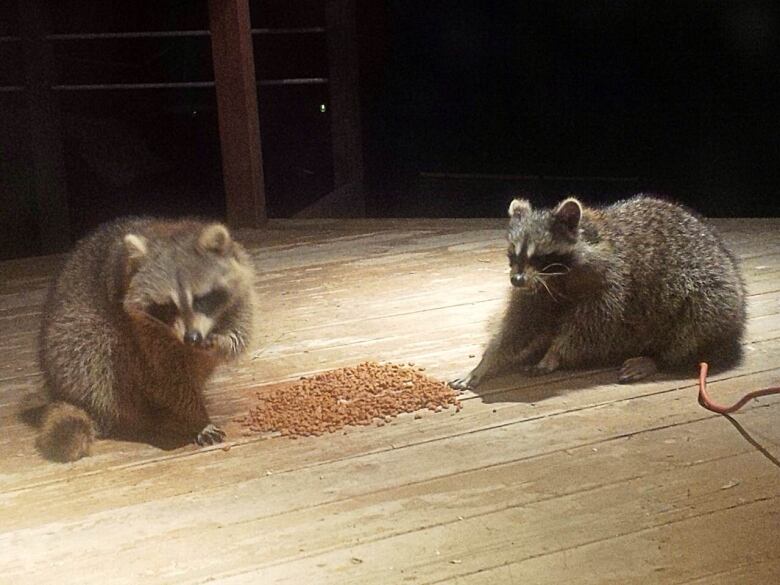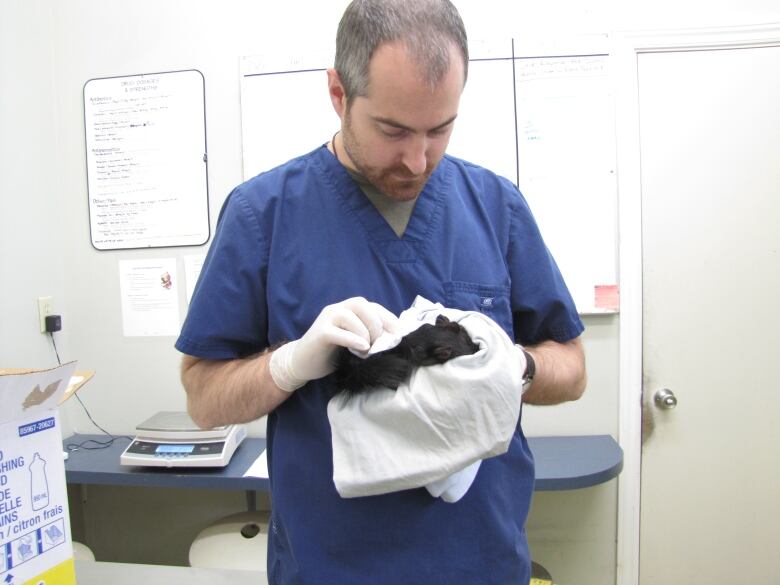Raccoon City: Wildlife in Toronto
How Torontonians live with their animal neighbours
Vilma Filici has a raccoon family living under the backyard deck of her Lawrence Avenue West and Bathurst Street home. Shes one of many Torontonians learning to share space with wildlife.
I love raccoons. If I could have one as a pet I would, saidFilici who has been feeding the raccoons in her backyard for the past five years.
Once I gave them cat food, they started showing up at the door to the backyard regularly, saidFilici.
- Metro Morning segment on Skunks featuringNathalie Karvonen, executive director of the Toronto Wildlife Centre
- Ducks, swans killed by brutal winter weather
She saidfeeding the raccoons has meant that her garbage and compost bins have been left alone.
At one point, her backyard was home to five raccoons. Since last fall, the group has dwindled to three.Filici saidthey come around in the fall when their food supply is a bit more scarce, but disappear in the summer.
Raccoon vs.human
Karen Dick saidher Lansdowne Avenue and BloorStreet West neighbourhood is plagued with raccoon wars.
Our street is divided between people who dont mind them, people who trap themand people who hate them because they destroy their gardens, saidDick.

Shes relentless, saidDick.I think shes a nursing mom foraging for food.
The lactating female raccoon has been showing up regularly atDicks back door in search of food, forcing the family to invest in a new screen door.
We spent a couple of hundred bucks on the door, saidDick, adding that she "would never hurt them.
Others in the neighbourhood are taking a different approach.
We have one neighbour who throws old batteries at the raccoons, sprays the babies with a hose and has fortified his garden with flags, streamers and scarecrows to keep them out, saidDick.
She thinks his efforts are in vain.
I don't think theyll ever go away, she said.
Close encounters with wildlife
He cautiously approached the animals and offered them some snacks. The playful baby raccoons warmed up to him right away.
It was amazing for me, said Ship.She was just like a human mother supervising while I played with her kids.
Raccoons should run off screaming
We do get a lot more calls at this time of year, she said.Thats because the babies are growing and some of them are as big as the adults and sometimes theyre indistinguishable.
Karvonen saidpeople assume the population has exploded, but most likely things will change in a few months when the babies are older and the mother kicks them out of her territory.
The Toronto Wildlife Centre gets approximately 30,000 calls a year from people dealing with more than 300 species.Karvonen saidthis makes them the busiest wildlife hotline in the country.
In fact they have received so many calls from Torontonians seeking help on how to deal with animals in the past 21 years that they have created a 500-page manual to educate other wildlife centres.
Karvonen saidmany of the concerns that people have can be boiled down to one key issue.
The animals that people complain about the most are also the animals that a lot of people are feeding, saidKarvonen.
She said the best way to lower the population of wildlife in our city is to cut off their food source, that means not feeding the animals intentionally or unintentionally by giving them access to green bins and dumpsters.
The normal reaction that a raccoon should have to a human is for them to go run off screaming, said Karvonen.
Animals can bite
Filici saidshe learned one important lesson from her raccoon neighbours.
As she got more comfortable with the raccoons she started feeding them from hand. For the most part the animals would come gently and nibble on the food.

One day I was eating turkey and gave him a piece of white meat. He took it then grabbed my finger with his little hand and bit me," she said.
Filici said she doesnt think the baby raccoon meant to bite her, he was trying to get a bit of meat stuck to my finger.
Nevertheless, she was rushed to the hospital where she got over a dozen injections including a tetanus shot.
The one I got right where the bite was, that was really painful, saidFilici.
She had to go back to the hospital to get another four injections after that.
Despite the ordeal, shes still feeding the raccoons. But these days she doesnt hand feed them. Instead she leaves the cat food out for them to eat on their own.
Tips to preserve wildlife
Karvonen saidthat many people living in Toronto have little to no experience with nature and wildlife. She encourages anyone in need of help to call organizations like theirs that can offer advice and expertise.
She also offers some basic tips that can help preserve wildlife.

1. Do not relocate an animal
It is illegal to relocate most species in the province. All mammals, reptiles and amphibians as well as birds that are not migratory, like blue jays and cardinals fall into this category. She said moving the animals is futile.
2. Address the underlying problems
If one animal was attracted to your home or property that means another one will be along shortly unless you remove the source of attraction, like their food supply.
3. Monitor your cats
Karvonen suggests that all cats should be watched when they are outside, not only to help save wildlife but also because they are themselves in tremendous danger when unsupervised.













_(720p).jpg)


 OFFICIAL HD MUSIC VIDEO.jpg)
.jpg)



























































































